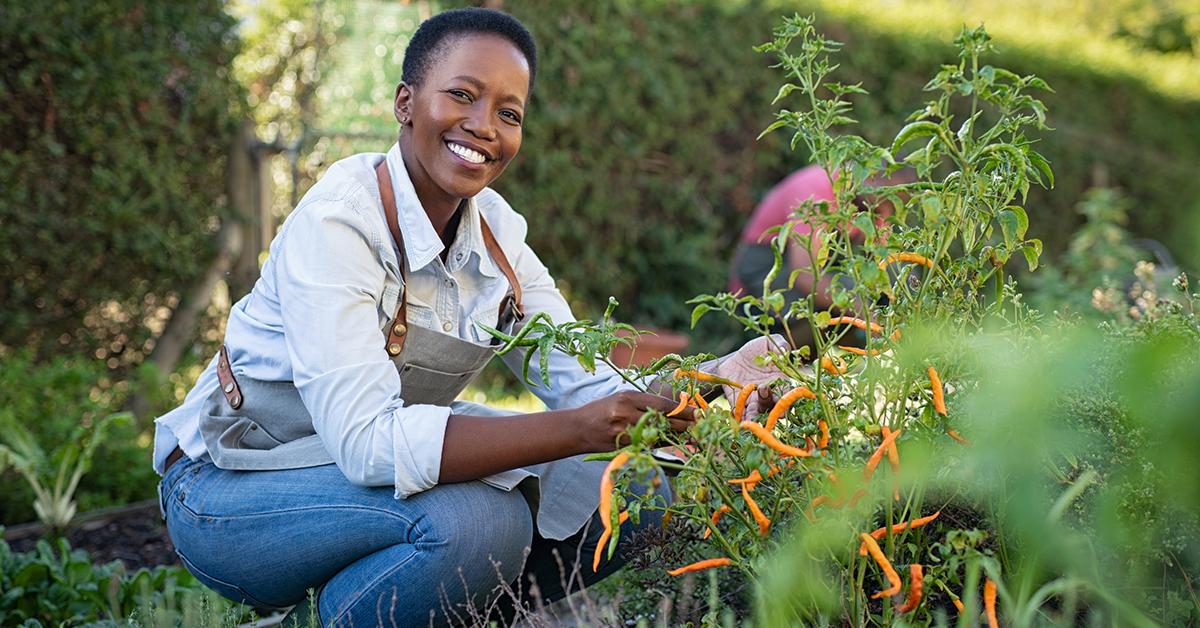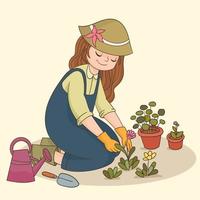Gardening 101: Structure Your Ultimate Gardening Kit for Beginners
Wiki Article
The Ultimate Overview to Horticulture for Beginners: Detailed Tips and Methods for Expanding a Thriving Yard
Are you ready to study the world of gardening? Look no further than "The Ultimate Guide to Gardening for Beginners." This step-by-step guide will stroll you via everything you need to understand to expand a growing yard. From comprehending your yard room to picking the right plants and preparing the dirt, we've obtained you covered. Obtain prepared to unleash your green thumb and create an attractive, flourishing yard.Understanding Your Garden Room
To optimize your horticulture success, start by acquainting on your own with the distinct attributes of your garden space. Recognizing your yard room is vital for producing a thriving yard. Begin by observing the amount of sunlight your garden gets throughout the day. Make note of any kind of areas that are shaded and those that get complete sun. This will certainly assist you identify which plants will thrive in each location.Following, analyze the dirt in your yard. Recognizing your dirt kind will certainly direct you in selecting the right plants and executing suitable dirt amendments. This info will certainly aid you make notified decisions regarding watering and plant placement.
These are tiny locations that might vary in temperature level or dampness degrees contrasted to the rest of your yard. Make use of these variants to your advantage by planting heat-loving or moisture-loving plants in these areas.
Selecting the Right Plants

Do you choose low-maintenance plants or are you ready to put in extra effort for high-yield crops? Think concerning the amount of time, energy, and resources you are prepared to spend in your garden.
Furthermore, take into consideration the room readily available in your garden. Take measurements and plan the layout of your plants. Consider the fully grown size of each plant and make sure they have enough room to expand without congestion each various other.
Ultimately, assume regarding the practicality of your plant options. gardening for beginners. Will you be able to provide the essential treatment and upkeep for your chosen plants? Think about elements such as watering, fertilizing, pest control, and pruning
Preparing the Dirt for Growing
As soon as you have actually selected the ideal plants for your prospering yard, it's time to dive right into the essential job of preparing the soil for planting. Take an example and test its pH degrees, as different plants grow in various pH ranges.
When the dirt prepares, develop furrows or openings for growing. The deepness and spacing will depend on the particular requirements of your chosen plants, so describe the seed packages or plant tags for support. Carefully put the plants in their marked places, ensuring that the origins are covered with dirt. Firmly press the soil around the base of each plant to remove any kind of air pockets.
Finally, water the newly grown location extensively. This will certainly assist work out the dirt and supply the plants with the wetness they need to develop themselves. As you water, take care not to remove the dirt or damages the delicate plants. With proper dirt prep work, your yard will be well-equipped to sustain the growth and success of your plants.
Watering and Feeding Methods
After preparing the dirt for growing, it's crucial to comprehend reliable watering and gardening tips for beginners feeding strategies to make certain the wellness and growth of your garden. One way to gauge if your plants need watering is by sticking your finger concerning an inch right into the soil. When watering, aim for the base of the plants, as moistening the fallen leaves can motivate illness.Keeping a Healthy Garden
To maintain a healthy and balanced yard, you should routinely inspect your plants for indicators of diseases or bugs. By doing this, you can catch any kind of concerns early and take the needed steps to prevent them from triggering and spreading damage to your whole garden. Look for any uncommon areas on leaves, yellowing or wilting foliage, or holes in the fallen leaves, as these might be signs of parasites or illness. It is important to take instant action. if you notice any of these indications.One way to deal with parasites is by utilizing natural remedies such as insecticidal soaps or neem oil. These are efficient in regulating common parasites like aphids, termites, and whiteflies without hurting valuable bugs. An additional technique is to motivate valuable pests like lacewings and ladybugs, which prey on garden insects. Growing blossoms such as daisies, sunflowers, and marigolds will draw in these valuable insects to your garden.
Along with parasites, conditions can additionally impact your plants. To avoid the spread of conditions, it is very important to practice good garden hygiene. This includes eliminating any type of infected plants or leaves, sterilizing your gardening tools, and avoiding over-watering. Proper spacing between plants and excellent air circulation can likewise help prevent the spread of diseases.
Verdict
Finally, horticulture can be a fulfilling and satisfying pastime for beginners. By comprehending your garden room, choosing the right plants, preparing the soil, and executing appropriate watering and fertilizing strategies, you can produce a flourishing garden. Remember to keep its health and wellness by regularly often tending to it. With persistence and devotion, you'll quickly be delighting in the beauty and bounty of your very own flourishing yard. Satisfied gardening!Make use of these variations to your benefit by planting moisture-loving or heat-loving plants in these areas.

Report this wiki page